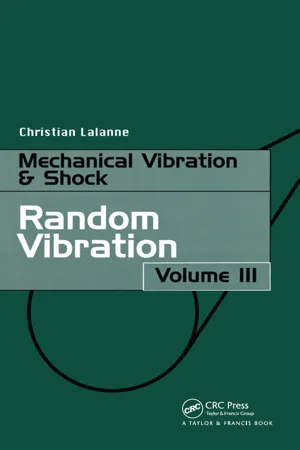
- 320 pages
- English
- ePUB (mobile friendly)
- Available on iOS & Android
Random Vibration
About This Book
The vast majority of vibrations Encountered in the real Environment are random in nature. Such vibrations are intrinsically complicated, and this volume describes the Enabling process for simplification of the analysis required. and the analysis of the signal in the frequency domain. Power spectrum density is also defined, with the requisite precautions to be taken in its calculation described together with the processes (windowing. overlapping) necessary for improved results. A further complementary method, the analysis of statistical properties of the time signal. is described. This enables the distribution law of the maxima of a random Gaussian signal to be determined and simplifies calculation of fatigue damage to be made by the avoidance of the direct counting of peaks.
Frequently asked questions
Information
Chapter 1
Statistical properties of a random process
1.1. Definitions
1.1.1. Random variable
1.1.2. Random process
Table of contents
- Cover
- Half Title
- Title Page
- Copyright Page
- Table of Contents
- Introduction
- List of symbols
- 1 Statistical properties of a random process
- 2 Properties of random vibration in the frequency domain
- 3 Rms value of random vibration
- 4 Practical calculation of power spectral density
- 5 Properties of random vibration in the time domain
- 6 Probability distribution of maxima of random vibration
- 7 Statistics of extreme values
- Appendices
- Bibliography
- Index
- Synopsis of five volume series